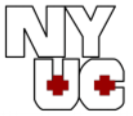Healthcare is concerned with delivering health services to people, either directly or indirectly. Occupational health services may be provided in various work environments, including nursing homes, hospitals, clinics, etc.
Hospitals and other healthcare institutions have similar work dangers and risks specific to the healthcare industry. In addressing this terrible viral infection, COVID-19 has strongly emphasized the necessity of occupational health care services plans, increasing the capacity of healthcare systems, and most crucially, the responsibility of health professionals.
All operations have been examined due to the public health emergency, and steps have been taken to reduce and control risks and hazards. Healthcare workers face a variety of hazards and risks when they provide care in homes and communities.
They may themselves suffer from health issues ranging from infectious diseases to radiation-related malignancies, even though their main goal is to enhance, safeguard, and grow the community’s and its residents’ health.
What Exactly is Occupational Safety and Health?
The science of occupational health and safety is concerned with identifying, assessing, and controlling risks that could endanger workers’ physical, psychological, and social well-being across all occupations. Only with the cooperation and engagement of employees and employers in occupational health and safety feasible. The most important issues—such as industrial hygiene, toxicology, engineering safety, psychology, ergonomics, etc.—are more challenging to overcome.
Occupational health and safety management: what is its scope?
The following are comprised in the area of occupational health and safety, which has increasingly expanded:
- Enhancing and sustaining the general well-being of all staff
- Preventing risks to workers’ health from their jobs
- Defending employees against dangers related to their line of employment
- Retaining employees in a workplace environment that meets their physical and mental needs
- Customization of work to workers
Occupational Safety and Health Administration
The US Department of Occupational Safety and Health Administration (OSHA), is responsible for defining and enforcing preventive workplace safety and health standards and was established as a result of the Occupational Safety and Health Act of 1970 (OSH Act). OSHA regulations outline the steps companies must take to safeguard their staff members from workplace dangers. Providing fall protection, limiting contact with hazardous chemicals, preventing trench cave-ins, preventing exposure to potential pathogens, preventing exposure to harmful materials like lead, asbestos, etc., and providing safety equipment and training for certain occupations are just a few examples of OSHA standards.
Health and Safety Risk
The possibility that a person would be harmed or experience a negative health effect due to exposure to a hazard can be defined as a health and safety risk concerning occupational health and safety.
A health and safety risk’s severity can be classified based on the likelihood that it will cause harm or have a negative impact on a person’s health, as well as the frequency and number of exposures.
Risk control measures can be taken to lessen the possibility of risk of exposure, remove the danger, or minimize the potential of exposure to a given hazard.
A risk to a worker’s health and safety in occupational health refers to an evaluation of dangers that could cause harm, injury, sickness, or death at a specific workplace. Despite being listed separately, these hazards are taken into account together. A health and safety risk considers the physical circumstances under which a certain worker experiences a specific unfavourable reaction.
A risk to a worker’s health and safety will rely on how likely a specific hazard may injure a worker. A risk is everything that could endanger a worker while they are at work, including chemical, electrical, radioactive, biological, and other risks, employee conduct, and other elements.
A vital area of health care that integrates several professions is occupational health care. Employees and staff at work are obligated to use occupational health services for their safety and well-being.
A medical service committed to teaching staff members about external causes of sickness and injury prevention. Wellness, pre-placement training, medication, counselling, and other services are all considered occupational health services.
The nearest occupational health clinic in New York is available at NYUCC. Throughout treatment, patients have immediate access to and support from our knowledgeable professionals.

